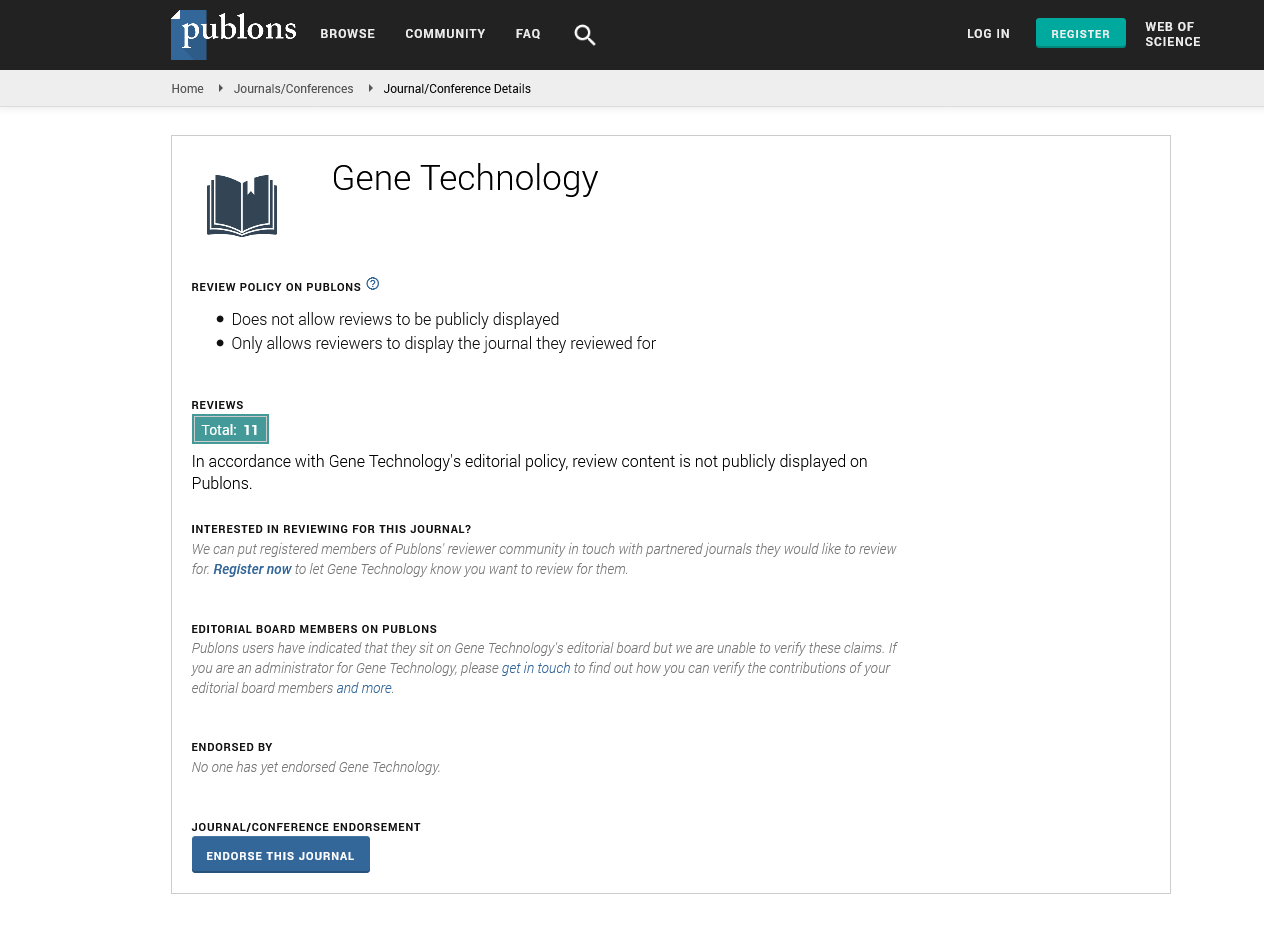Indexed In
- Academic Keys
- ResearchBible
- CiteFactor
- Access to Global Online Research in Agriculture (AGORA)
- RefSeek
- Hamdard University
- EBSCO A-Z
- OCLC- WorldCat
- Publons
- Euro Pub
- Google Scholar
Useful Links
Share This Page
Journal Flyer

Open Access Journals
- Agri and Aquaculture
- Biochemistry
- Bioinformatics & Systems Biology
- Business & Management
- Chemistry
- Clinical Sciences
- Engineering
- Food & Nutrition
- General Science
- Genetics & Molecular Biology
- Immunology & Microbiology
- Medical Sciences
- Neuroscience & Psychology
- Nursing & Health Care
- Pharmaceutical Sciences
Opinion Article - (2024) Volume 13, Issue 1
Advancing Neurological Solutions for Nanoparticle-Mediated Gene Editing in Brain
Richard Leung*Received: 01-Mar-2024, Manuscript No. RDT-24-25264; Editor assigned: 04-Mar-2024, Pre QC No. RDT-24-25264 (PQ); Reviewed: 18-Mar-2024, QC No. RDT-24-25264; Revised: 25-Mar-2024, Manuscript No. RDT-24-25264 (R); Published: 01-Apr-2024, DOI: 10.35248/2329-6682.24.13.275
Description
Human brain and addressing neurological disorders pose formidable challenges in medical study. Recent advancements in gene editing technologies, coupled with innovative delivery systems, offer a capable avenue for targeted interventions. Nanoparticle-mediated delivery of non-viral gene editing technology to the brain has transformative potential, with applications, challenges, and an evolution in neurogenetics. Gene editing technologies, such as CRISPR-Cas9, have revolutionized our ability to precisely modify genes within living organisms. In the context of neurological disorders, the prospect of correcting or modulating genes associated with conditions like Alzheimer's, Parkinson's, or genetic epilepsies holds immense therapeutic promise. However, the challenge lies in delivering these gene-editing tools effectively and safely to the intricate landscape of the brain.
Nanoparticles, engineered particles with dimensions on the nanoscale, serve as precision couriers in drug and gene delivery. Their size and surface characteristics make them ideal candidates for navigating the complex barriers of the body, including the Blood-Brain Barrier (BBB) that safeguards the brain from potential threats. Leveraging the unique properties of nanoparticles, researchers are exploring their potential to deliver gene editing tools to specific regions of the brain. The bloodbrain barrier, while essential for protecting the brain, poses a significant hurdle in delivering therapeutic agents. Surface modifications, such as coating nanoparticles with molecules that can interact with BBB receptors, enable targeted delivery, ensuring that gene editing tools reach their intended destinations within the brain. Selecting for nanoparticle delivery is a critical aspect of this innovative approach. Gene editing technologies like CRISPR-Cas9, when encapsulated within nanoparticles, must retain their functionality and specificity. Exploring various formulations and protective strategies to ensure the stability and efficacy of gene editing payloads during their journey through the bloodstream and across the BBB. The nanoparticle-mediated delivery lies in its precision targeting capabilities. By fine-tuning the properties of nanoparticles, researchers can direct their cargo to specific brain regions, a feat previously challenging with conventional drug delivery methods. This level of precision is particularly crucial in neurogenetics, where specific brain regions are implicated in various disorders, and targeted interventions are essential for therapeutic success.
Neurodegenerative diseases, characterized by the progressive loss of structure and function of neurons, stand to benefit significantly from nanoparticle-mediated gene editing. The ability to precisely target and modify genes associated with conditions like Alzheimer's and Parkinson's offers a ray of hope for developing therapies that address the underlying causes of these debilitating disorders, potentially altering their course or preventing their onset. Genetic epilepsies, arising from mutations in specific genes, present another limit for nanoparticle-mediated gene editing. By delivering targeted gene corrections to affected brain regions, researchers aim to mitigate the underlying causes of epilepsy. This approach not only for managing symptoms but also for providing a potential cure by addressing the genetic roots of the condition. While the potential of nanoparticle-mediated gene editing in the brain is challenges and ethical considerations abound. Ensuring the safety of these delivery systems, minimizing off-target effects, and addressing potential long-term consequences are important. Ethical considerations regarding the permanence of genetic modifications, consent, and the potential for unintended consequences demand careful scrutiny as this technology progresses. The field of nanoparticle-mediated gene editing in the brain evolves; emerging trends indicate a shift toward even greater precision and safety. Eexploring advanced nanoparticle formulations, incorporating feedback mechanisms, and refining delivery strategies to enhance the efficacy and specificity of gene editing tools. Collaborations between neuroscientists, geneticists, and nanotechnologists are becoming increasingly important to drive innovation and address the multifaceted challenges associated with this transformative approach.
The convergence of gene editing technology and nanoparticle mediated delivery systems heralds in neurogenetics. The prospect of precisely modifying genes within the intricate landscape of the brain opens unprecedented possibilities for treating and potentially curing neurological disorders. While challenges and ethical considerations underscore the need for caution, the transformative potential of nanoparticle-mediated gene editing in the brain for a future where targeted interventions revolutionize the landscape of neurodegenerative diseases, genetic epilepsies, and other neurological conditions. The synergy between nanotechnology and gene editing prepare for innovative therapies that may reshape the future of neurology and medicine.
Citation: Leung R (2024) Advancing Neurological Solutions for Nanoparticle-Mediated Gene Editing in Brain. Gene Technol. 13:275.
Copyright: © 2024 Leung R. This is an open-access article distributed under the terms of the Creative Commons Attribution License, which permits unrestricted use, distribution, and reproduction in any medium, provided the original author and source are credited.

